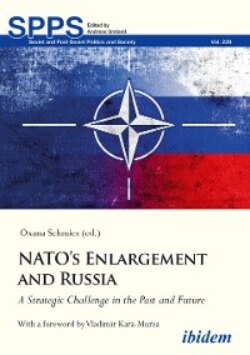Читать книгу NATO’s Enlargement and Russia - Группа авторов - Страница 18
The Collapse of Nuclear Arms Control
ОглавлениеThe military, technical, strategic, and political trends discussed above are destroying the systems and regimes of nuclear arms control built over a half-century through the great efforts of the Soviet Union/Russia, the United States, and others. Scholars have warned about this scenario for years,44 and now the danger has become obvious to everyone.
It is clear now that the weakest link in the nuclear arms control system was the INF Treaty. At the same time, the main claims of the parties against each other on compliance issues could be solved relatively quickly at the technical level if there was the political will and strategic interest in solving them. But instead, the Trump administration has officially announced its intention to denounce this historic treaty and did it in August 2019. Naturally, Russia followed suit.
The crisis in nuclear arms control is also manifested in the fact that for ten years, Russia and the United States have not discussed how to progress to the next START agreement. This is the longest pause in fifty years for such negotiations. Although both parties fulfilled their reduction obligations under the current New START by the February 2018 deadline (though with certain misgivings from Russia), the treaty will expire in 2021, and this will create a vacuum in strategic arms control. There is little time for the conclusion of a new treaty, given the deep disagreement between the two parties on important issues. Meanwhile, the U.S. administration had been reluctant to extend New START to 2026 (which can be done once under the terms of the treaty). The paradox of the domestic situation was that administration was facing pressure in favor of the treaty extension mostly from the liberal community, that was striving for doing away with President Trump one or the other way.
The United States and Russia are therefore on the threshold of a new large-scale arms race and, unlike the Cold War, this nuclear missile race will be augmented by competition in offensive and defensive non-nuclear strategic and medium-range weapons, as well as rivalry in the development of space weapons and cyber warfare.
Beginning in the mid-2020s, the United States plans to modernize its strategic triad: new systems to replace the current heavy bombers, ICBMs, and SLBMs.45 And Russia continues to modernize its triad, deploying and developing two new ICBM systems (Yars and Sarmat), one SLBM system (Borei-Bulava), and two heavy bomber systems (modernized Tu-160M and PAK DA).
In addition, the United States is developing the above-mentioned systems for limited nuclear strikes (Trident-2 SLBMs with low-yield warheads, LRSO, B61-12, and nuclear sea-based cruise missiles). And Russia is developing the strategic systems unveiled in Putin’s March 1, 2018, address (that is, Burevestnik nuclear-powered intercontinental cruise missiles, Avangard hypersonic gliders, and Poseidon long-range nuclear-powered and nuclear-armed super-torpedoes).46 The impact of these weapons on strategic stability requires special analysis, but is unlikely to be positive.
In addition, this arms race will be multilateral, involving states such as China, NATO members, India and Pakistan, North and South Korea, Japan, and others. The start of a nuclear arms race would undoubtedly undermine the norms and regimes for the nonproliferation of nuclear weapons. The review conference of the Non-Proliferation Treaty in 2015 ended in failure. The next conference in 2020 was doomed to fail, but was postponed by about a year due to the Covid-19 pandemics. Still it may end in the same way, especially in light of the U.S. withdrawal from the 2015 multilateral Iran nuclear deal and a number of other deep controversies among the treaty member-states. This would likely be followed by the collapse of the CTBT, which for twenty-four years has not entered into force because of the refusal of the United States and a number of other states to ratify it. Nor is there much hope for progress in negotiating the Fissile Material Cutoff Treaty, which has been stalled for more than a quarter-century. Iran and Saudi Arabia will likely join the nuclear club, as may Egypt, Turkey, Japan, South Korea, Taiwan, Nigeria, South-African Republic, Brazil, and other countries. Through them, nuclear weapons will sooner or later inevitably fall into the hands of international terrorists, with all the ensuing consequences.
